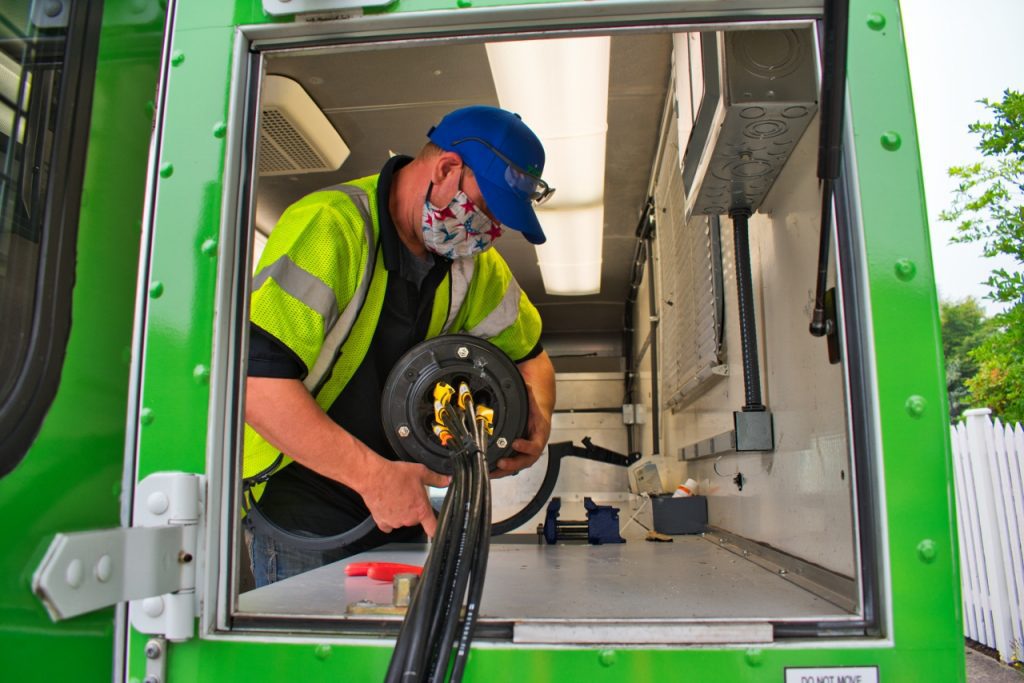Should you get 5G or a 10G network? Cable or fiber? If youre confused by the new influx of internet speed jargon, youre not alone. Thats why Ziply Fiber, a Northwest internet service provider (ISP), breaks down the important differences so you can make an informed decision.
Regardless of where you live, these terms are out there and people seeing them are often confused by them because they have such similar names, says Dan Miller for Ziply Fiber. Ziply Fiber wants to help people make smart decisions on what works for them.
Ziply Fiber is dedicated to bringing ultra-fast, reliable fiber internet to Washington, Oregon, Idaho and Montana, including to rural and underserved areas traditionally overlooked by other ISPs.
Ziply Fiber Explains Gigabits and Megabits
Ziply Fiber wants you to get comfortable with the internet speed terminology. Internet plans are marketed with speeds in gigabits per second (Gbps) or megabits per second (Mbps). The gigabits (gigs) or megabits indicate how much stuff video, music, games, social content, emails a user or users can access all at the same time.
Most residential customers have plans between 50 Mbps and 1 gig. Gig-speed internet means a plan offers a download speed of 1 gigabit per second, or 1,000 megabits per second. However, download speeds are only one part of the equation.

Ziply Fiber Says Symmetrical Upload/Download Speeds Are KeyA little-known fact is that most companies only list and market their download speeds. When you see a cable internet provider listing 200 Mbps, thats only the download speed. However, the upload speed is equally important its how fast you send things to the internet, like your image and voice on a video call and its usually just a fraction of the download speed. When download and upload speeds are asymmetrical or uneven, you might hear people say that your video is frozen on a call, or the audio is cutting in and out, meaning your connection is likely causing problems.
Entirely fiber-optic internet plans like those from Ziply Fiber are symmetrical. This means they always offer the same upload and download speeds, giving better performance with no lag or buffering. Its the best choice for those needing bandwidth and capacity for:
- Gaming
- Streaming movies
- Working or studying from home

Ziply Fiber: 5G Means 5th Generation Wireless
The term 5G simply stands for 5th Generation. 5G is the technology standard for broadband cellular networks today. The 5G symbol on your phone means its connected to your providers 5th Generation network.
The 5 doesnt mean five times faster and doesnt mean 5 gigs. In fact, according to Ookla, the wireless carrier with the fastest 5G speed test for 2023s second quarter had an average download speed of just 220 Mbps, a fraction of the speed consumers can access versus a typical gig-speed fiber plan.
Ziply Fiber Says 10G is a Network Name
Unlike with 5G, 10G doesnt mean 10th Generation because there was no 7G, 8G or 9G. Its simply what a cable company named its network.
ISPs touting 10G today are often referring to speeds still in development. This may be confusing because it sounds like they have 10 Gig plans. In most areas, plans advertised on a cable 10G network currently top out at 1-gig download with a much lower upload speed, because many of these networks run on older copper-based technology designed for sending TV signals and not the modern internet for which a fiber-to-the-home network is designed.

Ziply Fiber: 10 Gig Means Ultra-Fast Speeds
Heres the final speed jargon lesson. If 1 gig = 1,000 Mbps, then 10 gigs = 10,000 Mbps. Thats the latest speed tier from Ziply Fiber, recently named Fastest ISP in the West by CNET when Ziply Fiber launched the regions first 10 Gig fiber-to-the-home network in Washington, Oregon, Idaho and Montana.
Residential fiber 10Gig internet is brand new, and those who want to take advantage of its mind-blowing speed today are probably serious content creators. It also makes gaming and high-definition video streaming a blast.
Ziply Fiber Helps You Determine What Internet Speed You Need
Not everyone needs a 10 Gig or even a 5 Gig plan. Ziply Fibers most popular plans are their fiber 2 Gig and 1 Gig plans, which offer ultra-fast, reliable, symmetrical upload/download connectivity to allow you to do everything you want online seamlessly across multiple connected devices.
If your needs are minimal, then a basic fiber plan like the 100/100, which offers 100 Mbps download and upload speeds, provides a quality connection suitable for checking email, browsing and streaming at a very affordable price.
Bottom line: Ziply Fiber wants you to know that on the fiber-optic internet, you wont experience aggravations like buffering wheels and peak-time slowdowns. And remember: not all Gs are created equal.
Miller says Ziply Fiber is expanding into more Northwest communities, upgrading systems and helping people make educated choices. For more information, contact Ziply Fiber by calling 866.699.4759 or visiting the Ziply Fiber website.
